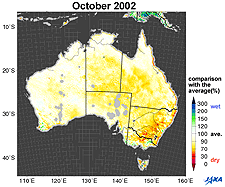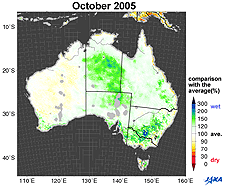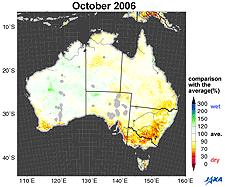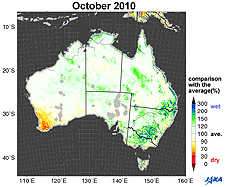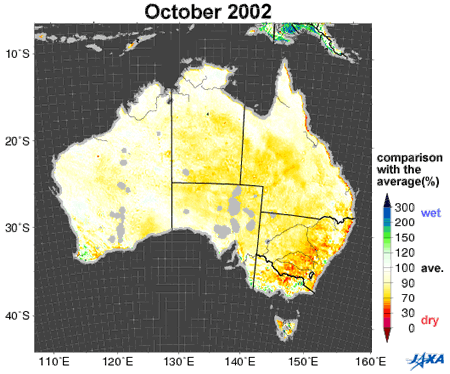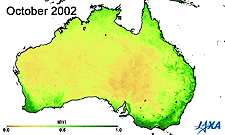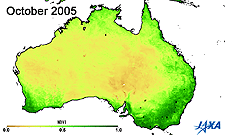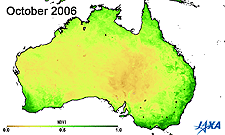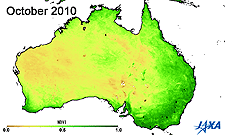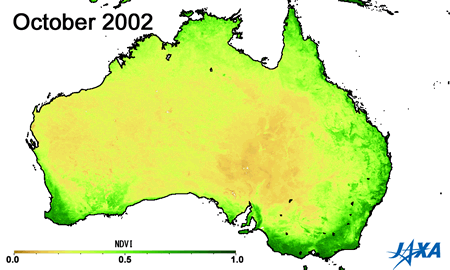Seen from Space 2012
Climate anomalies in Australia (2002 to 2010)
|
Fig.1. Changes in soil moisture in Australia (October 2002, 2005, 2006, 2010)
Yellow to red shows areas that are drier than the average Figure 1 shows a comparison between the average values of soil moisture*1 (2002 to 2010) in Australia and the values corresponding to October 2002, 2005, 2006, and 2010, as observed by the Advanced Microwave Scanning Radiometer for EOS (AMSR-E)*2. Areas colored yellow to red are drier than the average. *1) Soil moisture represents the proportion of moisture contained in a unit volume of soil. When soil absorbs moisture and reaches saturation, the soil moisture is around 50%. Fig. 2.
Changes in soil moisture in October from 2002 to 2010
Comparison of October soil moisture with the average October soil moisture for 2002-2010 Figure 2 shows yearly changes in soil moisture in October from 2002 to 2010. AMSR-E images indicate the dryness of the soil in 2002 and successive years from 2006. Wheat is the main crop in Australia and is planted over half the cultivated land. The major areas under wheat cultivation are located in the southwest and east of the country, and they correspond to the areas that suffered severe dryness during the study period. Fig. 3. Vegetation index of Australia (October 2002, 2005, 2006, and 2010)
Green indicates greater plant activity Fig. 4. Changes in vegetation index in October from 2002 to 2010
Figures 3 and 4 show the vegetation index*3 obtained from observations made by MODIS aboard the American Earth observing satellite, TERRA. The area of high vegetation activity (shown in green) is small in 2002 and 2006 but large in 2005 and 2010. The vegetation index can help determine areas of low soil moisture and droughts. *3) A higher vegetation index indicates increased health and activity of vegetation. Historically, droughts have occurred in Australia every 10 years. However, Australia had been thrice hit by drought (2002, 2006, and 2007) since 2000. In particular, the drought of 2006 was the worst such even in the past 100 years. Australia has vast land areas and mixed climates. Droughts happen frequently in some areas, whereas other areas are hit by floods. Explanation of the Images:
|
